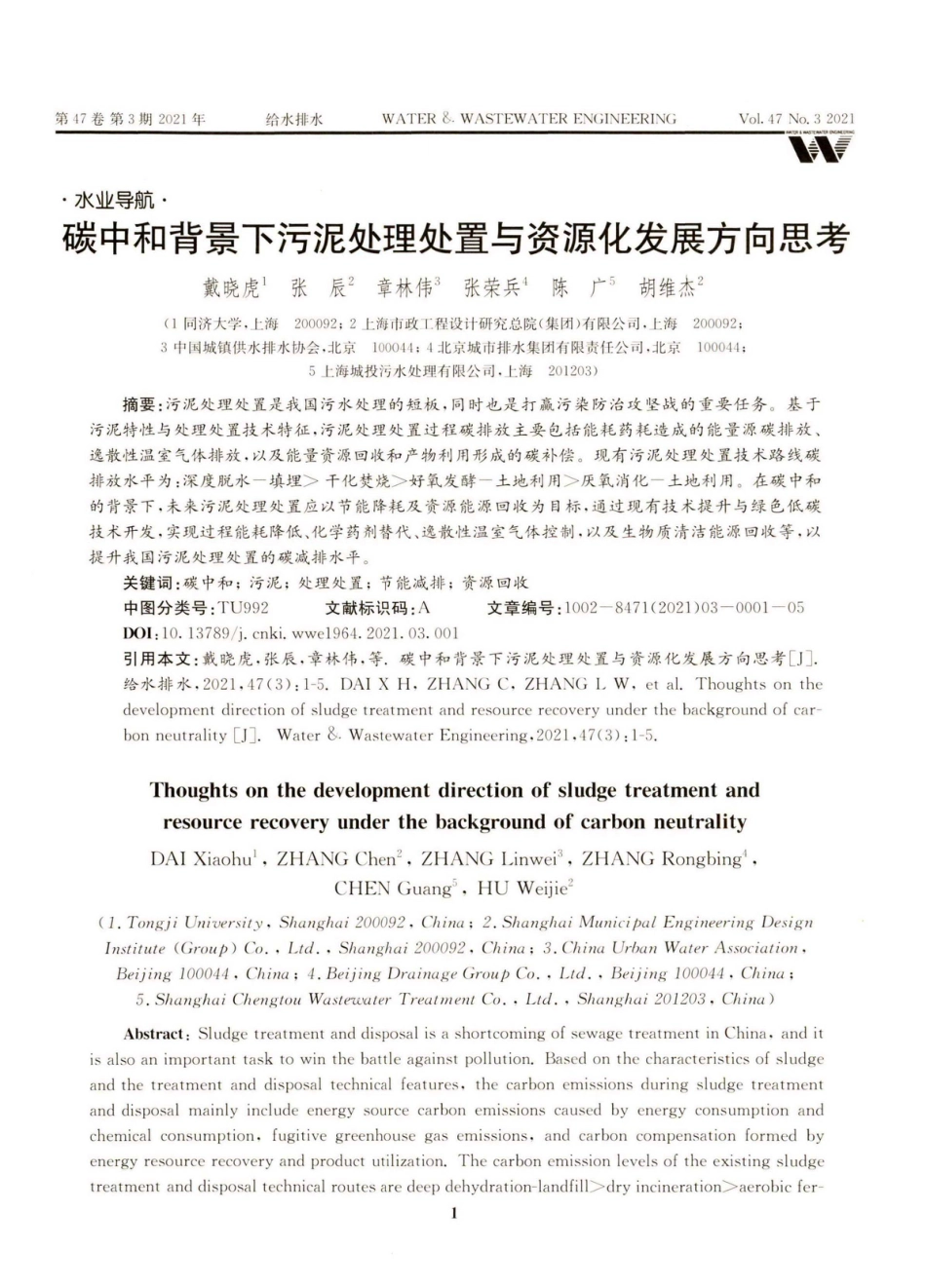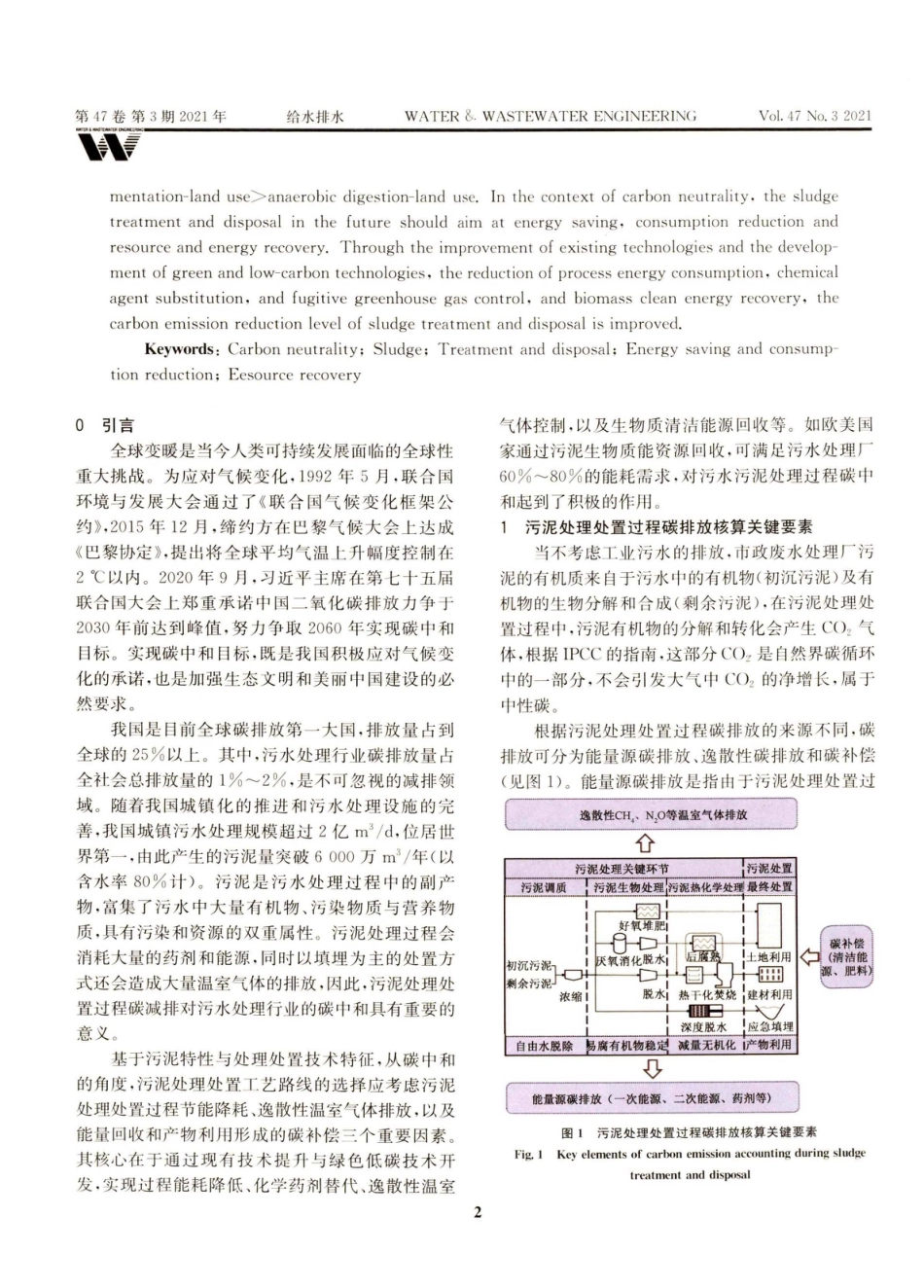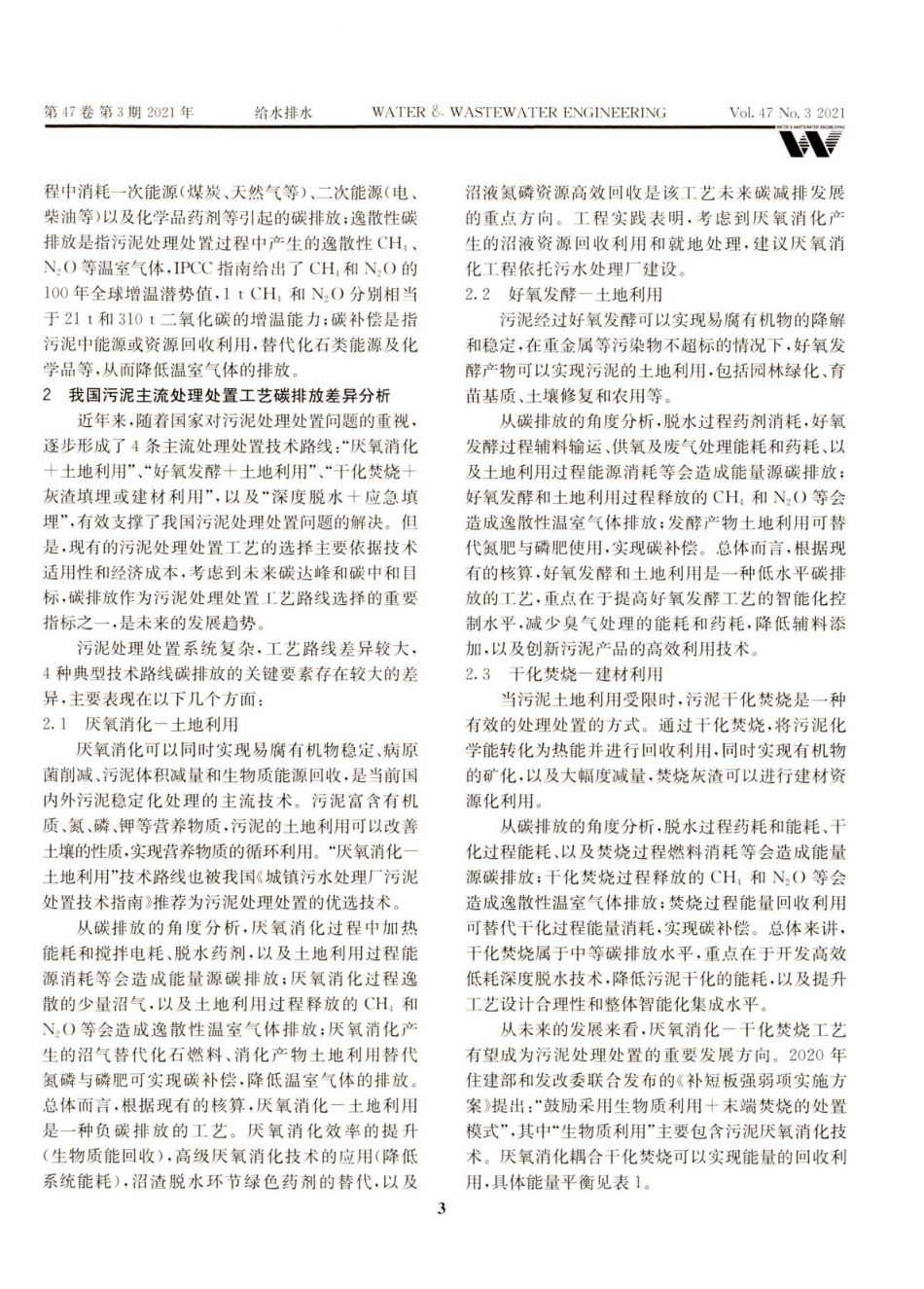第 47 卷 第 3 期 2021 年 给水排水 WATER &. WASTEWATER ENGINEERING Vol. 47 No. 3 2021• 水 业 导 航 •碳中和背景下污泥处理处置与资源化发展方向思考戴 晓 虎 1张 辰2章林伟 3张荣兵 4陈 广5胡维杰 2( 1 同 济 大 学 ,上 海 200092; 2 上海市政丁.程 设 计 研 究 总 院 (集 闭 )有 限 公 司 ,上 海 200092;3 中_ 城 镇 供 水 排 水 协 会 ,北 京 100044; 北 京 城 市 排 水 集 团 有 限 责 任 公 司 • 北 京 100044;5 上海城投污水处理有限公司,上 海 201203)摘要:污泥处理处置是我国污水处理的短板,同时也是打赢污染防治攻坚战的重要任务。基于 污泥特性与处理处置技术特征,污泥处理处置过程碳排放主要包括能耗药耗造成的能量源碳排放、 逸散性温室气体排放,以及能量资源回收和产物利用形成的碳补偿。现有污泥处理处置技术路线碳 排放水平为:深度脱水一填埋> 干化焚烧〉好氧发酵一土地利用 > 厌氧消化一土地利用。在碳中和 的背景下.未来污泥处理处置应以节能降耗及资源能源回收为目标,通过现有技术提升与绿色低碳 技术开发,实现过程能耗降低、化学药剂替代、逸散性温室气体控制•以及生物质清洁能源回收等,以 提升我国污泥处理处置的碳减排水平。关键词:碳中和;污泥;处理处置;节能减排;资源回收中图分类号:TU 992 文献标识码: A 文章编号= 1002 —8471(2021)03—0001—05DOI: 10. 13789/j. cnki. wwel964. 2021. 03. 001引用本文:戴晓虎.张辰,章林伟.等.碳中和背景下污泥处理处置与资源化发展方向思考[J ].给水排水,2021,47(3): 1-5. DAI X H . ZHANG C , ZHANG I. W. et al_ Thoughts on the development direction of sludge treatment and resource recovery under the background of carbon neutrality [J ], Water & Wastewater Engineering,2021,47(3) : 1-5.Thoughts on the development direction of sludge treatment and resource recovery under the background of carbon neutralityDAI Xiaohu1 , ZHANG Chen2, ZHANG Linwei3, ZHANG Rongbing1,CHEN Guang"1. HU Weijie2(J . Tougji University, Shanghai 200092. China; 2. Shanghai Munici pal Engineering Design Institute {Group) Co....



